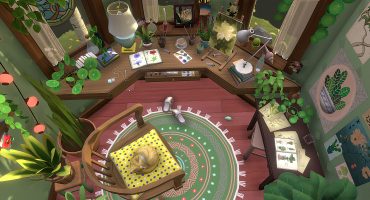My name is Lauren Olinger, and I first heard about photogrammetry while I was a masters student living in the US Virgin Islands in 2015. In the midst of designing a field experiment for the first time, I was running into issues. The problem: I wanted to study competition between Caribbean reef corals and sponges (specifically, how fast sponges overgrow and smother corals), but these animals are so amorphously shaped that it was difficult to accurately measure how much surface area of one is covered by another. While looking for ways to solve this problem, I found a study that used photogrammetry to make 3D models of living corals. I had always assumed that 3D scanning required extravagant hardware and expertise, and so was floored to learn about how structure-from-motion photogrammetry could be used to model almost anything – even parts of a living coral reef – using only a camera.
Flash forward six months, I had received a small grant to purchase Agisoft Photoscan and was making progress on the experiment. For this, we attached combinations of sponges and algae to corals, in order to simulate competition among the three groups. We then measured how fast each competitor (sponge or algae) overgrew the corals using photogrammetry. What we found was quite interesting: some sponges overgrew corals much faster when the sponge was also in contact with algae. On Caribbean reefs, corals are continuing to decline, while algae and sponges grow like weeds and are more abundant than ever. Our findings have some important implications for reefs where both algae and sponges are proliferating, as this could mean even faster loss of corals.
In early 2018, I joined Dr. Joseph Pawlik’s lab at the University of North Carolina Wilmington, where my focus has shifted almost entirely towards sponges. Sponges, animals belonging to the phylum Porifera, are poorly understood and less popular research subjects compared to corals and other reef organisms. Sponge research is on the rise, however, because of growing awareness of the important ecological role that sponges play, and also because this group is more and more abundant in the Caribbean, especially on degraded reefs where the space once occupied by corals is now vacant. The field of sponge ecology – much like photogrammetry – is in its heyday, and I am fortunate to be able to bridge these two disciplines.
We use photogrammetric techniques to gather some basic but essential information about sponges. These important pieces of information have eluded scientists, in large part because of the myriad species and morphologies found across the sponge group. Moreover, there are no sponge fossil records or indicators of annual growth (something like tree rings) for living sponges. The diversity of sponge shapes alone has made it very difficult to measure sponge volume, especially for the more structurally complex, branching species. Traditionally, the fastest way to do this has been to collect whole specimens and measure how much water they displace. Besides being a lot of work, this technique kills anything that is collected. With photogrammetry, we can circumvent this destructive process entirely and take more accurate measurements for many more individuals.
Highlights: Sponges of Tibbetts Wreck, Cayman Brac by Lauren Olinger on Sketchfab
A better way to measure sponge size also leads to improved estimates of growth rate. Basic demographic parameters such as growth rate are important, for example, if we want to predict how quickly sponges will colonize following a coral die-off. Our lab recently used photogrammetry to measure the volumes of sponges growing on a shipwreck, where we knew (from the date of sinking) their maximum age. This creative approach allowed us to rapidly estimate growth rates for an unprecedented 16 species of Caribbean sponges and make interesting new comparisons across species. Our next objective is to estimate the total biomass of sponges on coral reefs, which we expect to be a considerable – maybe even the largest – fraction of the total biomass of coral reef organisms.
Applying photogrammetry to the realm of coral reefs has presented some unique challenges. We are fortunate to be able to work on shallow reefs (usually less than 40 ft), but we have had some success on reefs up to 90 ft deep. The problem as you go deeper is the limited light and unavoidable blue cast. This can be remedied to some degree by installing a red filter over the lens, but I have found it most effective to just batch correct the colors of the photographs prior to importing into the photogrammetry software. Another problem is the surrounding wavy objects such as soft corals and algae, as these can “confuse” the software during image alignment. To minimize this background movement, I have gone so far as to use a rubber band to temporarily gather and restrain the movement of all the fronds of an adjacent soft coral, or to clear all the algae from a surrounding area. Fortunately, when SCUBA diving, we have a lot of freedom to move around and make sure the scene is ready to be photographed, since this technique requires minimal equipment. In fact, I usually only carry a camera (point-and-shoot or GoPro) and scale bar, in the form of coded targets printed on a slate (I mostly use the one made by Samantha Thi Porter that can be found here).
Like so many other 3D/photogrammetry enthusiasts, I am largely self-taught, having received little formal instruction beyond some familiarization with laser scanners and 3D software early in my undergrad days. Because of this, when first figuring out how to use photogrammetry, I relied heavily on online resources for information, which is how I came across Sketchfab. Joining has connected me to a global community of scientists and even some artists. Above all else, Sketchfab has given me the chance to offer a glimpse of the science we do, and to share the beauty and diversity of coral reefs with anyone who is interested.
Lauren Olinger’s ResearchGate / Pawlik lab website




